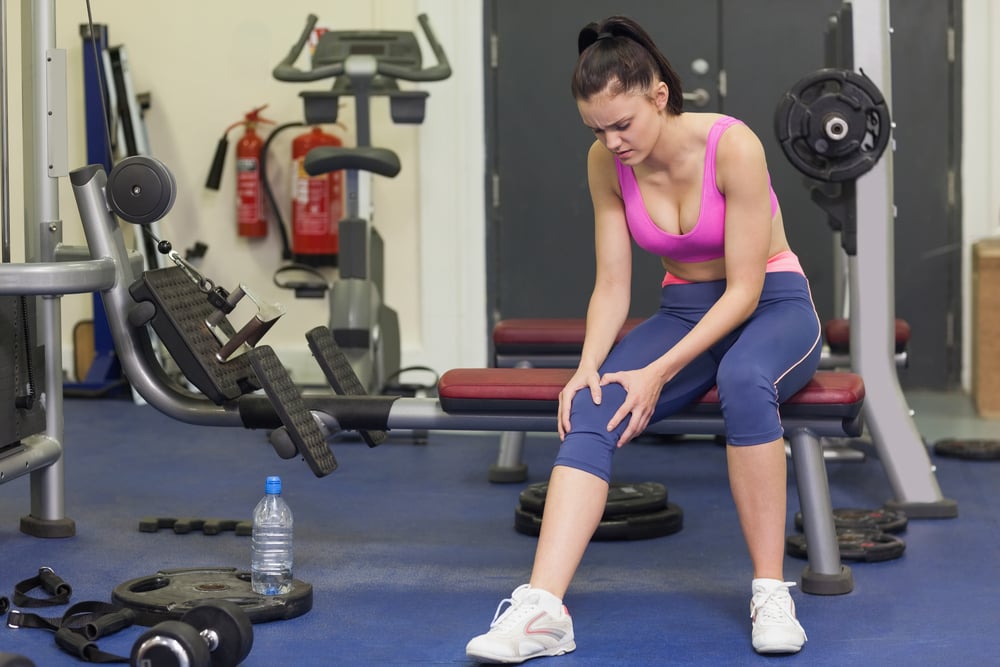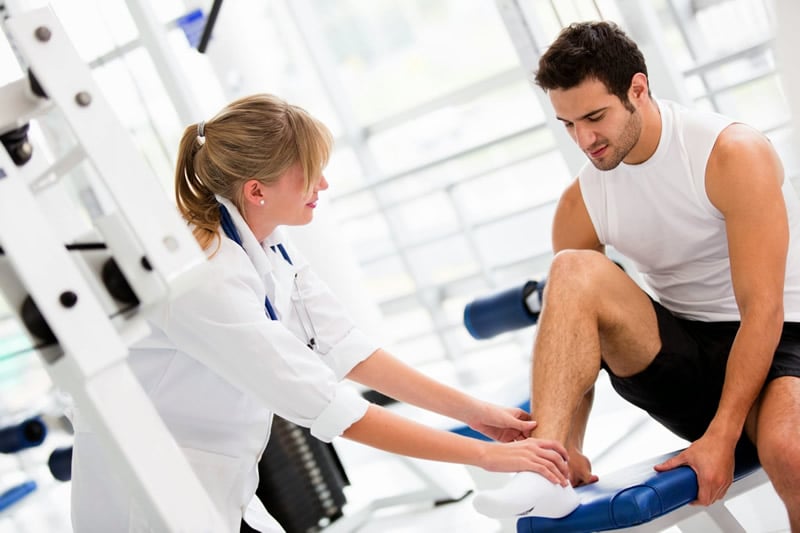Our Services
Knee Pain Treatment
The professionals at Square One Physio have extensive experience in dealing with pain assessment and management, including that associated with the knee.
HOW WE HELP
Knee Pain
Knee pain is a common ailment among older as well as younger adults. It has various causes and should be treated considerably with accurate diagnosis. Older adults over the age of 65 years are at higher risk of knew pain than those who are younger. Children and younger adults can also experience knee pain if they participate in sports or other activities requiring active movements that include repetitive movements or produce stressful situations in the body. It can significantly limit you daily activities and can be cured with a healthy lifestyle including regular exercise.

What causes knee pain?
Knee pain can arise commonly from soft tissue injuries, high body weight or arthritis.
Soft tissue injuries include cartilage tears or ligament fractures in the knee. Cartilage is a semi-hard (tough, but flexible) tissue that covers the end of your bones. It can occur in case of sudden twisting of the foot when the knee is bent or while lifting heavy weights, playing sport, etc.
Knee ligament injuries lead to severe knee pain through acute stress in the knee joints. Ligaments keep you knee stable by keeping your bones together. Knee ligament tear or sprains are common sports injuries.
Knee arthritis is a condition in which the cushioning between the knee joints and cartilage wears off. This results in excessive rubbing of joints of bones and causes pain, swelling, stiffness, decreased ability to move and, sometimes, the formation of bone spurs.

How to diagnose knee pain?
A thorough subjective and objective examination from a physiotherapist is usually sufficient to diagnose the cause of knee pain. Investigations such as an X-ray, ultrasound, MRI, CT scan or bone scan are often required to confirm diagnosis and rule out other injuries.
During you clinical diagnosis of knee injury, the modes of treatment are often dependent on location of the pain in the knee and how the pain started, that is the mechanism of source of pain (sudden twisting or gradual onset). Clinical examination to diagnose knee pain includes history taking of the patient, physical examination and various tests.
Physical examination involves inspection, palpation, percussion, and other special tests. Inspection involves inquiring about the patient’s medical history involving any previous injuries. Palpation is the process of using one’s hands to examine the injury and percussion is a method of tapping on a surface to determine the underlying structure and asses the knee injury.
X-ray and MRI (Magnetic Resonance Imaging) is an important part of clinical diagnosis and is used by physicians to understand the main causes of the pain, tenderness, swelling, or deformity of the knee, and detect broken bones or a dislocated joint.
Treatment
A very real consequence of not professionally addressing pain is an aggravation of that pain. If your pain is acute or minor, always consult a specialist to address it sooner than later. Physiotherapists at Square One Physio are licensed and well experienced to treat pain arising from various conditions.
Regular exercise can actually lessen and even relieve knee arthritis pain and other symptoms, such as stiffness and swelling.
The following describe several of the best at-home exercises for knee. They’re easy, effective, and convenient, and don’t require any special equipment. Do them slowly, gradually increasing the number of repetitions as your muscles get strong.
The Leg Raise (Lying): Lie flat on your back on the floor (or bed) with your arms at your sides, toes up. Keeping your leg straight, tighten your leg muscles and slowly lift it several inches. Tighten your stomach muscles to push your lower back down. Hold and count to five, then lower the leg as slowly as possible. Repeat, and then switch to the other leg. Start with one set of four for each leg. This exercise strengthens the quadriceps, which are the large muscles on the front of your thigh that attach to your knee joint.
The Hamstring Stretch (Lying): Lie on the floor (or bed) with both legs bent. Slowly lift one leg, still bent, and bring your knee back toward your chest. Link your hands behind your thigh (not your knee) and straighten your leg. Pull your straight leg back toward your head until you feel the stretch. Hold for 30 to 60 seconds, then slowly bend your knee and lower your leg back to the floor. This exercise stretches and strengthens your hamstrings, which are the muscles on the back of the thigh that attach to the knee.
The Half-Squat: Standing with your feet shoulder-distance apart, stretch your arms out in front of you (hold on to a chair for balance, if necessary), and slowly bend your knees until you’re in a half-sitting position. Keep your back straight and chest lifted — don’t lean forward. With your feet flat on the floor, hold the position for five seconds, and then slowly stand back up. Do 10 repetitions, and slowly work up to three sets of 10. This exercise strengthens the muscles in the front and back of your thighs, along with the gluteus (buttocks).
The One-Leg Dip: Standing between two chairs, holding on to them for balance, lift one leg about 12 inches and hold it out in front of you. Slowly, keeping your back straight, bend the other leg and lower your body a few inches, as if you were about to sit in a chair. Don’t cross the lifted leg in front of the bent leg. Hold for five seconds and straighten back up. Repeat and switch legs. Start with one set of four leg dips for both legs, and slowly work up to three sets. This exercise strengthens the muscles in the front and back of your thighs, as well as your buttocks.
The Leg Stretch: Sit on the floor with both legs out straight. Stabilize yourself with your hands on either side of your hips, keeping your back straight. Slowly bend one knee until it feels stretched, but not until it becomes painful. Hold the leg in that position for five seconds, then slowly straightens your leg out as far as you can, again holding for five seconds. Repeat, switching legs whenever one begins to tire, 10 times. This exercise strengthens the quadriceps, which are the muscles on the front of the thigh.
Our Team
Merin Davis
Registered PhysiotherapistSamir Shah
Registered PhysiotherapistChristina Tabarez
Registered Massage TherapistMaribel Benemerito
Registered Massage TherapistThuy Tran
Registered Massage Therapist/ Registered AcupuncturistSheila Arambulo
General Manager
About Us
We do more than just physio
Our practitioners dive deep to address and treat the root of the problem to give each patient as complete recovery as possible for long lasting results. Not only are our patients treated for their injuries, but also for injury prevention using exercise, nutritional counselling and advice for healthy-lifestyle practices.
